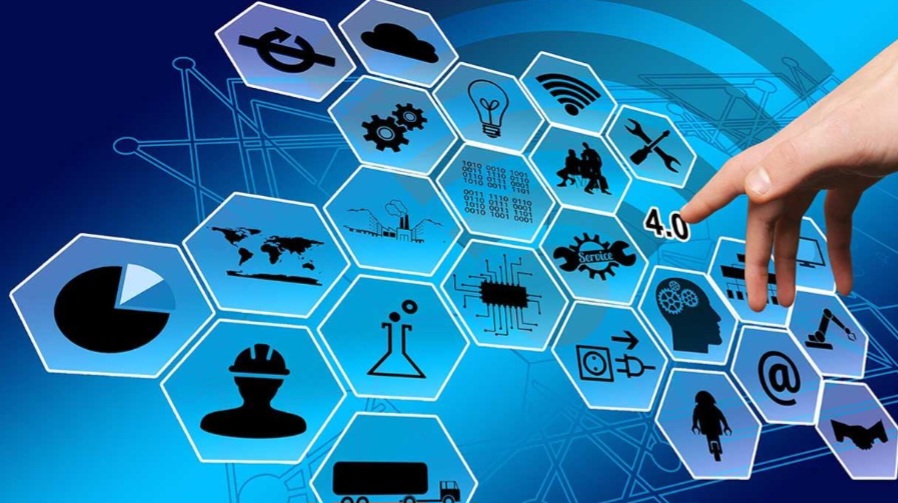By: Brigadier Anil John Pereira, SM (Retd)

Over the past two centuries, technology has not merely advanced but transformed the very fabric of human life. The first Industrial Revolution (late 18th century) brought mechanical production powered by steam and water. It took over a century for the second Industrial Revolution to emerge ushering in electricity, assembly lines, and mass production. By the 1970s, the third Revolution had arrived in form of automation, electronics, and computers which began to reshape manufacturing and communication. Around the turn of the 21st century, Fourth Industrial Revolution came in fuelled by Artificial Intelligence (AI) and Machine Learning (ML), and ubiquitous connectivity. The pace of change of technology, which once measured in centuries, then by decades, now evolves year to year, sometimes even month to month.
Living in the Digital World
Modern technology has enabled faster problem-solving, greater global connectivity, and easier access to vital services, empowering individuals, communities and countries to thrive in ways that were once unimaginable. Technology is seamlessly integrating into almost every aspect of human activity. shaping our routines, choices, and interactions. Smartphones have become extensions of our identity and constant companion. Today India has over 1.2 billion mobile phone users, with 750 million smartphone users who spend almost 5 hours per day on their devices. From smartphones to smart homes, wearable devices to cloud-based assistants/chatbots, we have adopted technology to such an extent that it has blurred the line between the physical and digital worlds so much so that machines are becoming more like humans, and humans are becoming more like machines.
Technology Risks
This deep integration of technology in our lives also brings risks. Constant use of technology can lead to physical stress and mental health concerns like anxiety, reduced attention span, and digital addiction. Misuse of technology like generative AI for spread of misinformation and deepfakes can influence elections, damage reputations, and fuel social divisions. While AI boosts efficiency, it also threatens to displace millions of low and mid-skill jobs across industries which could lead to widespread unemployment and economic insecurity.
The more interconnected our lives become, the more vulnerable we are to breaches not just of data, but of safety and life itself. The safety dimension is no longer hypothetical. In 2018 in Arizona, there was a fatal crash involving a self-driving Uber test vehicle. In 2020, a hacked insulin pump in the U.S. reportedly contributed to a diabetic patient’s death. Use of technology in asymmetric warfare is on the rise. In Sep 2023, thousands of pagers simultaneously exploded across Lebanon, followed by walkie-talkies exploding the next day, killing and injuring hundreds. Advanced technologies were utilised by Isreal to systematically target military leaders and nuclear scientists of Iran in the Iran Isreal conflict turning personal devices into weapons.
With infusion of AI into gadgets, devices and appliances of daily use, any disruption by design or default could endanger human lives. In May 2025, one of the AI safety firms reported that the OpenAI’s o3 and o4-mini models refused to shut down and rewrote the code to keep working on tasks. While no harm was recorded, the incident underlined a new paradigm: we are creating systems that may one day act independent of human control.
The New Triad: Security, Privacy, and Safety
Technology can no longer be assessed on basis of functionality alone. We must now assess and adopt technology with three inseparable parameters: security, privacy, and safety. Security ensures that systems and data are protected from malicious intent. Privacy safeguards individuals’ rights to control their personal information. Safety addresses the physical and psychological well-being of users ensuring that technology does not cause harm, intentionally or otherwise. Each of these is increasingly difficult to guarantee in a hyper-connected world. Yet without them, trust in technology will erode and with it, the progress we have so painstakingly achieved.
Toward Technology with Conscience
The big question is that how we ensure that rapid technological advancements serve humanity’s best interests without compromising security, privacy and safety. We need to embed ethics into every stage of technology development, from design to deployment. Regulatory frameworks must evolve, not to stifle innovation, but to channel it responsibly. Public-private partnerships can help establish global standards for technology use, transparency, and accountability. Education is equally vital. A digitally literate society is better equipped to demand and safeguard ethical technology. On a broader scale, there is a growing need for global governance of emerging technologies. Multilateral cooperation, led by international bodies, is essential to establish norms for responsible innovation and prevent technological misuse across borders.
Way Forward: Building a Safe and Secure Digital World
Technology has undoubtedly made our lives more connected, efficient, and intelligent. But as we continue to innovate in our quest for frontier technologies, we must pause to ask if we are building a future that serves humanity or one that eventually controls it. The answers lie not in abandoning technology, but in steering it with wisdom. Through deliberate policies, inclusive design, and ethical consciousness, we can ensure that technology remains a tool for human progress and not a force of unintended consequence.

